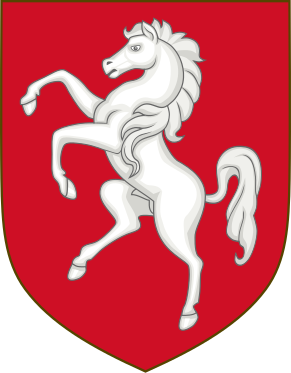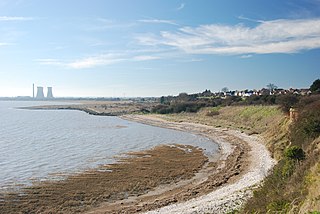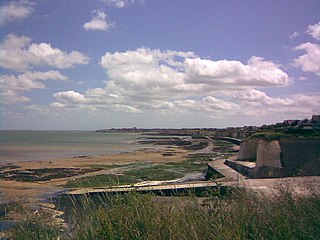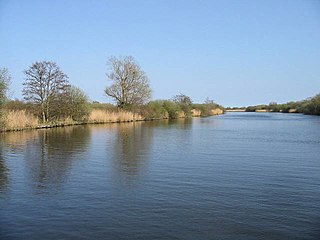| South Swale | |
|---|---|
 | |
| Type | Local Nature Reserve |
| Location | Faversham, Kent |
| OS grid | TR 047 653 |
| Area | 410.5 hectares (1,014 acres) |
| Managed by | Kent Wildlife Trust |
South Swale is a 410.5-hectare (1,014-acre) Local Nature Reserve (as South Bank of the Swale) north of Faversham in Kent. It is owned by Kent County Council and managed by Kent Wildlife Trust. [1] [2] [3] It is part of The Swale Ramsar site, [4] Special Protection Area [5] and Site of Special Scientific Interest [6]

Faversham is a market town and civil parish in the Swale district of Kent, England, United Kingdom. The town is 48 miles from London and 10 miles from Canterbury and lies next to the Swale, a strip of sea separating mainland Kent from the Isle of Sheppey in the Thames Estuary. It is close to the A2, which follows an ancient British trackway which was used by the Romans and the Anglo-Saxons, and known as Watling Street. The Faversham name is of Latin via Old English origin, meaning "the metal-worker's village".

Kent is a county in South East England and one of the home counties. It borders Greater London to the north west, Surrey to the west and East Sussex to the south west. The county also shares borders with Essex along the estuary of the River Thames, and with the French department of Pas-de-Calais through the Channel Tunnel. The county town is Maidstone.

Kent County Council is a county council that governs most of the county of Kent in England. It is the upper tier of elected local government, below which are 12 district councils, and around 300 town and parish councils. The county council has 84 elected councillors. The chief executive and chief officers are responsible for the day-to-day running of the council. Paul Carter is the leader of the council. Kent County Council is currently controlled by the Conservative Party and the official opposition is the Liberal Democrats with 7 seats. It is one of the largest local authorities in England in terms of population served and the largest local authority of its type.
This coastal site has wetland and grassland, with mudflats which attract a large population of waders and wildfowl in winter. Flora include Yellow horned-popies, sea-lavender, golden samphires and wild carrots. [3]

Glaucium flavum is a summer flowering plant in the Papaveraceae family. It is native to Northern Africa, Macronesia, temperate zones in Western Asia and the Caucasus, as well as Europe. The plant grows on the seashore and is never found inland. All parts of the plant, including the seeds, are toxic. It is classed as a noxious weed, in some areas of North America, where it is an introduced species. It is grown in gardens as a short-lived perennial but usually grown as a biennial.

The golden samphire is a perennial coastal species, which may be found growing on salt marsh or sea cliffs across western and southern Europe and the Mediterranean.
The Saxon Shore Way public footpath follows the top of the sea wall for the entire length of the reserve, around the village of Graveney, for about 3 miles in total. [7]

The Saxon Shore Way is a long-distance footpath in England. It starts at Gravesend, Kent, and traces the coast of South-East England as it was in Roman times (note the changed coastline around Romney Marsh) as far as Hastings, East Sussex, 163 miles (262 km) in total.

Graveney is a relatively small but widely dispersed village located between Faversham and Whitstable in Kent, England. The main part of the village is located along the intersection of Seasalter Road, Sandbanks Road and Head Hill Road, which is surrounded by farmland. The rest of the village is dispersed amongst this farmland.















